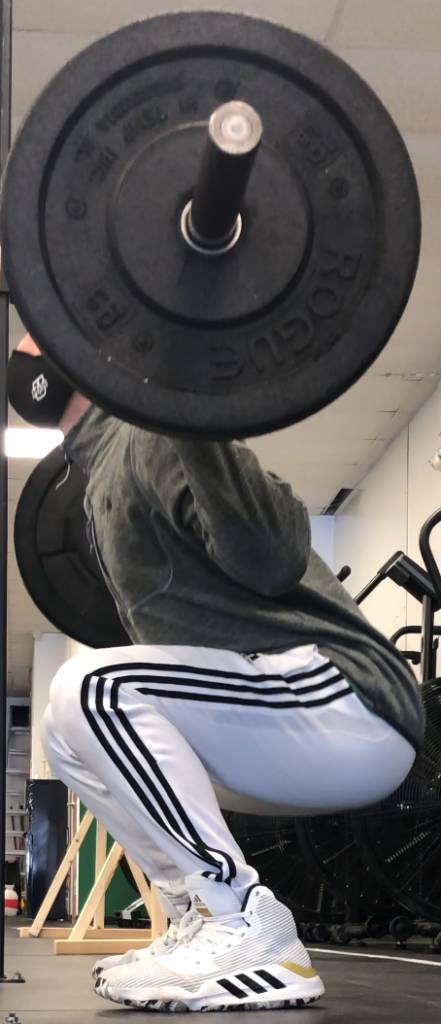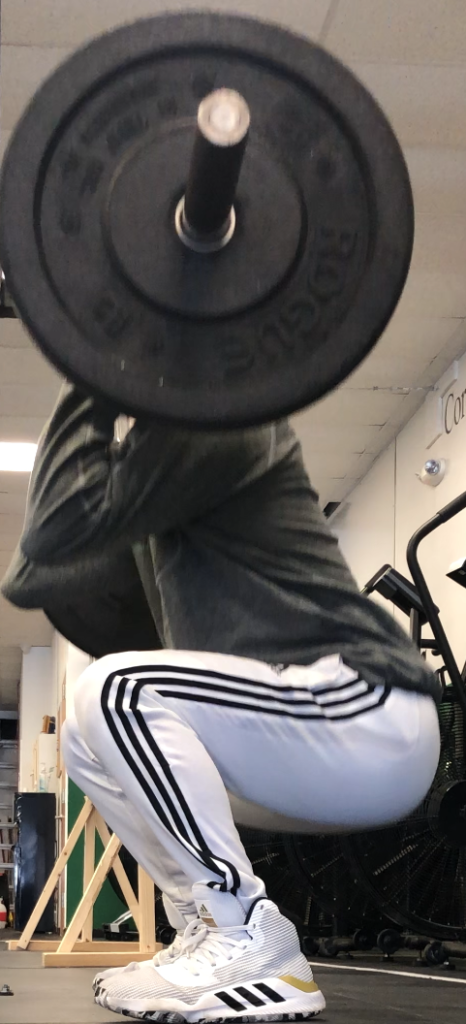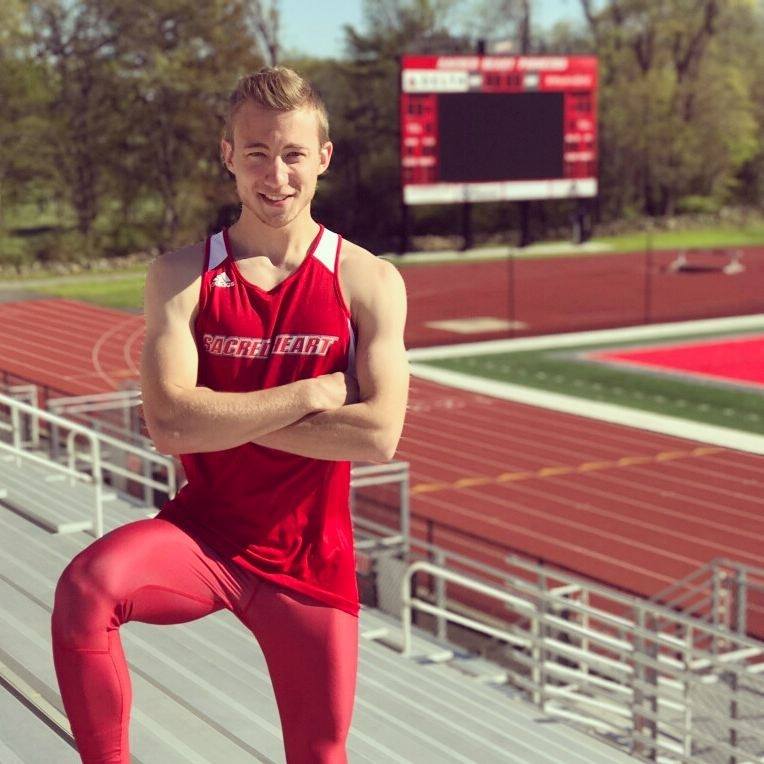
By: Evan Cleveland
Childrens’ minds and bodies are sponges as they’re developing, so everything they learn and do is very important! This is of course true for schooling, but it’s equally important with regards to exercise. The younger they are when they start exercising, the stronger and faster they can become when they’re older. This is why it’s important to have them train properly; it will maximize their potential.
After going through my exercise science curriculum, I realized how simple it is to train effectively… yet few people do it! I thought back to the strength programs I did for my soccer and track and field training, and picked out so many little things that could have been improved. For instance, I remember having wrist rolls as a part of our program, which was a weight attached to a rope on a handle that we would twist to get a forearm workout. This was a waste of time/energy, we could have just performed the deadlift exercise in order to train grip strength, while using several other muscles as well. Below are a list of movements and exercises that are essential to youth athletic development, they target the primary muscles necessary for all sports:
1. Deadlift
-Posterior chain engagement (hamstrings)
-Sprint speed
-Grip strength/endurance
In our modern society a lot of people typically need to use computers frequently, putting us in a very forward rounded posture. This causes muscular imbalances in our neck, back and shoulders. When you pick up a load from the ground, your back naturally wants to round forward. The deadlift forces you to counteract this, which will strengthen your back and actually assist in preventing it from injury. The deadlift exercise challenges the most muscle mass of the posterior chain.
The deadlift is one of the greatest exercises, which has developed a negative stigma that they will hurt you. People would think that it’s bad for your back, but on the contrary it’s actually the best exercise for your back. It’s only dangerous when done improperly. It also does a great job of training your grip strength, a powerful tool for fighting off illness. Not only is this exercise beneficial to everyone, it especially helps youth athletes because of the posterior chain engagement. These muscles don’t always get the attention they need at a young age, especially the hamstrings. This is because many strength programs only focus on your “push” muscles, while neglecting the “pull” muscles of your posterior side. The glutes, hamstrings and calves are the main muscles giving you speed during a sprint, all of which the deadlift targets. Being a part of the sprinters on my track team in college; it was consistently the fastest 100m sprinters that could deadlift the most weight. It can be a difficult movement to learn at first, so the trap bar deadlift is a good exercise to use at first because it doesn’t require as much grip strength or neuromuscular awareness. Working with a trainer or coach is important when using this exercise to make sure that your form is safe and effective!
2. Squat
-Quad/glute strength
-Vertical jump height
-Overall strength output/stability
Squatting is one of the most functional exercises in our training repertoire. This exercise is one of the most powerful tools for athletes especially as it is directly related to improving your sprint speed, vertical jump, and overall strength output. Using squats in your strength programs will give you the most bang for your buck. It innervates more of the quadricep muscles (knees) compared to the deadlift which targets more of the hamstrings. These are both very important and better for different situations. The hamstrings are better at providing raw speed in a sprint. The quadriceps are more useful for producing upward force, stronger kicks, and better deceleration.
There are many different variations of the squat:
Back squat: This is the easiest to start with since you can rest the weight on your back, and keep it within your center of gravity without extra effort. It has been shown to challenge the most musculature overall out of any exercise. In other words, doing the back squat will give you a very high return on investment for the work you put in!
Front squat: This one requires use of the front rack position which can be difficult especially for younger athletes. It focuses more on the quadricep muscles because the load is further in front of you. It’s also more of a functional exercise that helps people lift heavy objects, but it doesn’t have as much athletic translation as the back squat.
Deep squat: Normal squat depth is met once the femur is parallel to the ground. The deep squat incorporates a greater range of motion, which is NOT bad for your knees if done properly. However, if you use more weight than you’re comfortable with and lack the mobility, your form may break and you could injure yourself by placing too much stress on your knees. When done properly, it helps build lower body strength through your full range of motion. This variation is typically attached to the back squat, but you can deep squat in any mode in order to challenge yourself.
Back Squat Front Squat Deep Squat



There are many more variations, but these are three of the most common and useful regarding athletes. Depending on the sport, more than one may be useful for an athlete.
This study by the British Journal of Sports Medicine highlights the effect of half squats on sprint speed and vertical jump height in elite soccer players to find a highly positive correlation. A standard deviation of p<0.02 was found between squat strength and 10m/20m sprint time and jump height, meaning that the correlation was statistically significant.
3. Box Jump
-Vertical jump height
-Power/explosiveness
-Acceleration
Plyometric exercises (plyos) are explosive movements designed to train an athlete’s power output. An example of this is the box jump – which is exactly what it sounds like. People under the age of eighteen possess a lot of type IIx muscle fibers, which are highly impressionable and able to convert into different fiber types. We also have fast twitch muscle fibers which are type IIa and IIb, but our fastest/most explosive fibers are type IIb. These muscle fibers are developed when performing plyometric exercises. For that reason, any athlete that wants to become faster and more powerful should be performing plyometric exercises in their routine.
The box jump is similar to the squat regarding the muscles it trains, except it includes the plyometric component. It takes all the benefits of squat and applies them in terms of power (explosion) opposed to raw strength. For instance: squats will train the strength needed to jump and launch yourself higher, while box jumps will train your ability to contract your muscles faster and maximize use of the muscle.
Plyos including the box jump typically take advantage of a physiological process called the stretch-shortening cycle (SSC). This is characterized by a short eccentric muscle contraction (stretch) followed by a powerful concentric contraction. This is our method of producing the most power possible. You can actually test this with the box jump. Try a box jump at a comfortable height, except hold a squat for five seconds before jumping. Now try again how you would normally jump, a quick dip into an explosive immediate drive. Your second jump will be considerably easier! The SSC accounts for this strange occurrence. It improves your neuromuscular efficiency of a given task, allowing you to produce more power. You can also train the ability of your muscles’ SSC by practicing plyometrics, furthering the benefits of box jumps!
Are these exercises all you need?
These three exercises are not the be-all and end-all for athletes, but they are incredibly effective for any sport and will give you a high return on investment of time and effort. They are beneficial for everyone else too! Being able to squat comfortably with weight and pick up heavy things off the ground especially are extremely important for leading a longer, fit life. But remember, these exercises must be done properly. The effectiveness can be exponentially higher when implemented into a comprehensive training program, which can be found here at Prototype!
About Evan:

